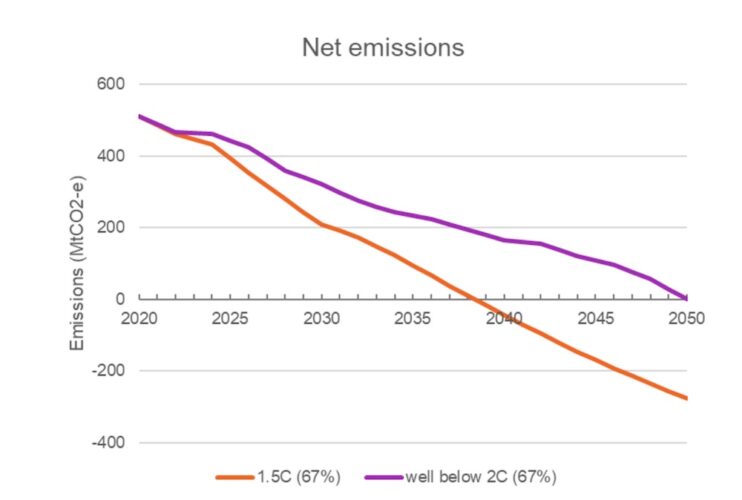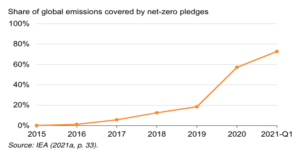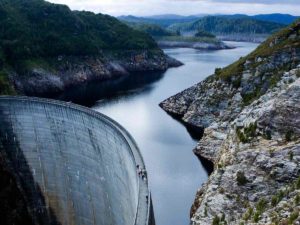Australia can hit the Paris climate goal of limiting global warming to 1.5°C, new modelling has shown, but to get there needs to urgently strengthen its 2030 emissions reduction target to 68 per cent below 2005 emissions and quit coal power completely before 2035.
The modelling by Monash University’s Climateworks Centre is the latest in a series of reports warning that Australia must aim higher and work faster to meet its obligations under the Paris Agreement, including to move its net-zero emissions target forward by a decade to 2040.
But the report, which models two Paris-aligned scenarios – limiting warming to 1.8°C and to 1.5°C – also shows that this can be done using existing technology and solutions and in a way that would increase Australia’s economic activity and meet energy demand.

“Our scenarios demonstrate the need for action in all sectors, with a strong dependency on renewable energy to enable decarbonisation across most of the sectors,” says Climateworks Centre CEO Anna Skarbek.
“It also includes the introduction of hydrogen into our modelling to support harder to abate sectors like industry and long-haul freight, with green hydrogen displacing blue hydrogen in the market from 2030.”
The key, in both scenarios, is to take immediate action to significantly boost renewables uptake – including to triple installed solar and wind capacity by 2030 – or else losing another decade in the race to halt global warming.
“If some of the assumptions in our scenarios don’t play out, like immediate action to reduce emissions in the next couple of years, then the net zero date would need to shift earlier than our modelling suggests and in line with other research,” the report says.
To keep in line with limiting warming to 1.5°C – the science-based target that sets a “defense line” to avoid extreme and irreversible climate effects – the modelling projects Australia’s emissions would need to be 68 per cent below 2005 levels by 2030.
By 2035, Australia’s modelled emissions would need to reach 85 per cent below 2005 levels, achieving net zero emissions by around 2039.
To do this, the report finds it is “cost effective” for Australia to rapidly replace coal and gas generated electricity with renewable sources and to go beyond the Albanese government’s current target of 82% renewables by 2030.
In the 1.5°C scenario this means eliminating coal-powered electricity generation completely before 2035, or by the late-2030s in the 1.8°C scenario.
Gas-powered electricity generation is also greatly reduced over this period, including through demand management practices, and by 2050 contributes less than 1% of total generation, used “on the rare occasions that demand exceeds supply” on the grid, the report says.
Meanwhile, renewable electricity generation grows to 83-90 per cent share of generation by 2030 under both scenarios, increasing from around 55GW of installed capacity, now, to137-151GW by 2030 and 363-398GW by 2050.

The renewables are backed by around 10-15GW of battery storage by 2030 and 44-55GW by 2050, the report says – and in both scenarios, the overall size of the electricity system increases to power homes, businesses and transport.
“The rapid increase in renewable electricity is doing more than just filling the gap left by decommissioning coal and gas generation – it’s also expanding to enable the electrification of other sectors of the economy,” the report says.
The modelling has the electrification and energy efficiency of housing play a significant role in both scenarios, improving by 41 per cent by 2050 compared to today’s levels.
And under the 1.5°C scenario, electric vehicles make up 73 per cent of new passenger car sales by 2030, compared to 56 per cent in the well-below-2°C scenario.
In the two scenarios, domestic hydrogen demand grows to 383-465 petajoules by 2050, or to around 12–16 per cent of total energy demand in 2050 across Australia.
The modelling shows hydrogen can play a role in industry, long-haul freight and maritime shipping if it becomes commercially viable for these sectors.
The report models emissions reductions from industrial and resource sectors of 54-67 per cent by 2050 on current levels, driven by earlier and faster uptake of electrification and hydrogen technologies through the 2020s and 30s.
And finally, Climateworks finds that in both scenarios, Australia needs to remove carbon dioxide from the atmosphere whether through nature-based sequestration or direct air capture, with the 1.5°C scenario calling for three times more CO2 removal or absorption from the atmosphere by 2050 compared with the 1.8°C.
“The trajectory for 1.5°C and well under 2°C is quite similar in important respects, meaning that carbon emissions reductions work undertaken today can contribute meaningfully and economically to limiting warming to 1.5°C, which research increasingly shows is crucial to avoiding the worst impacts of climate change,” says Skarbek.
“These futures become possibilities if Australia acts quickly, builds on the momentum towards net zero and urgently does the hard work needed to play its part in stopping the worst effects of climate change – while seizing the enormous opportunities that fast decarbonisation presents.”









